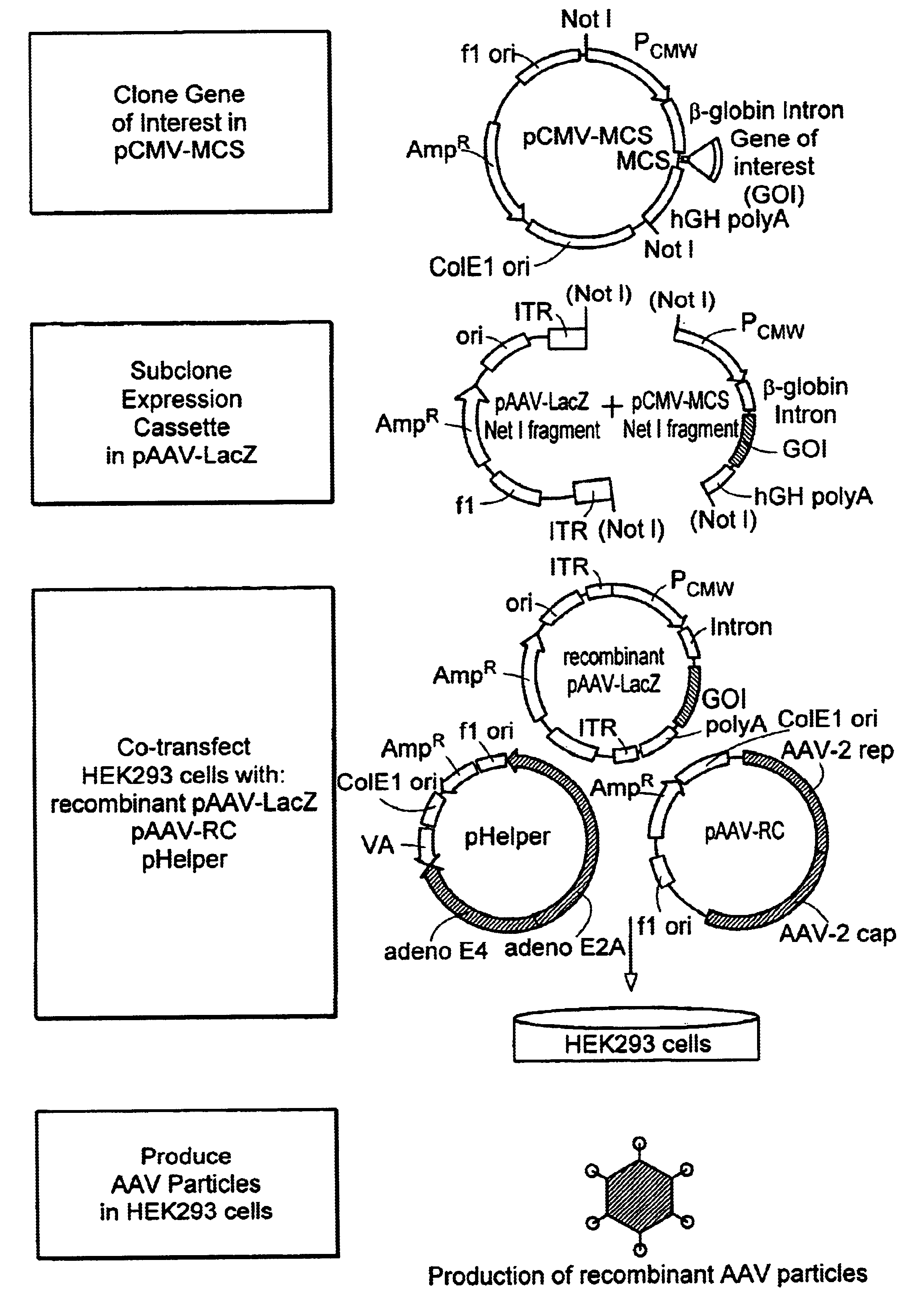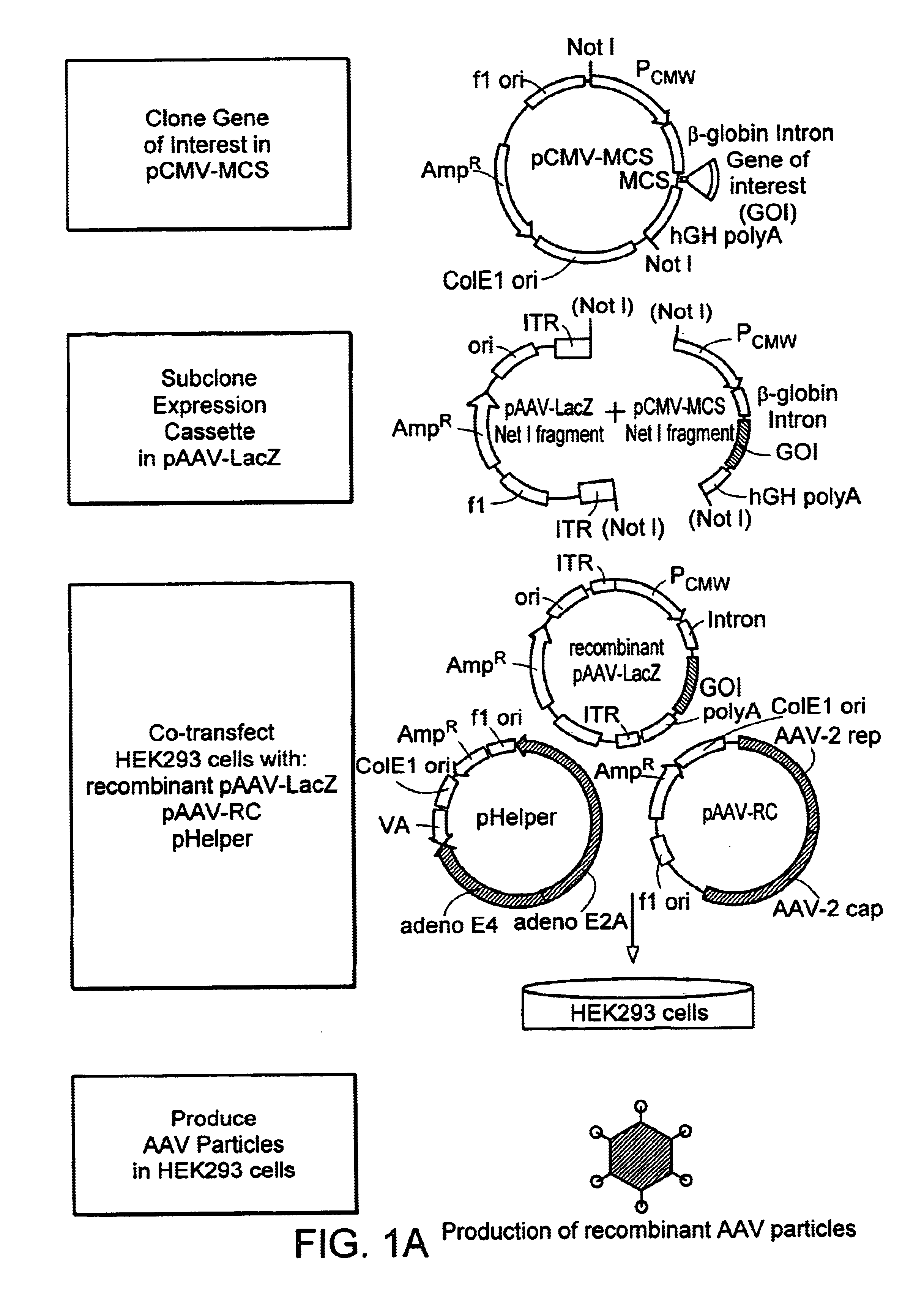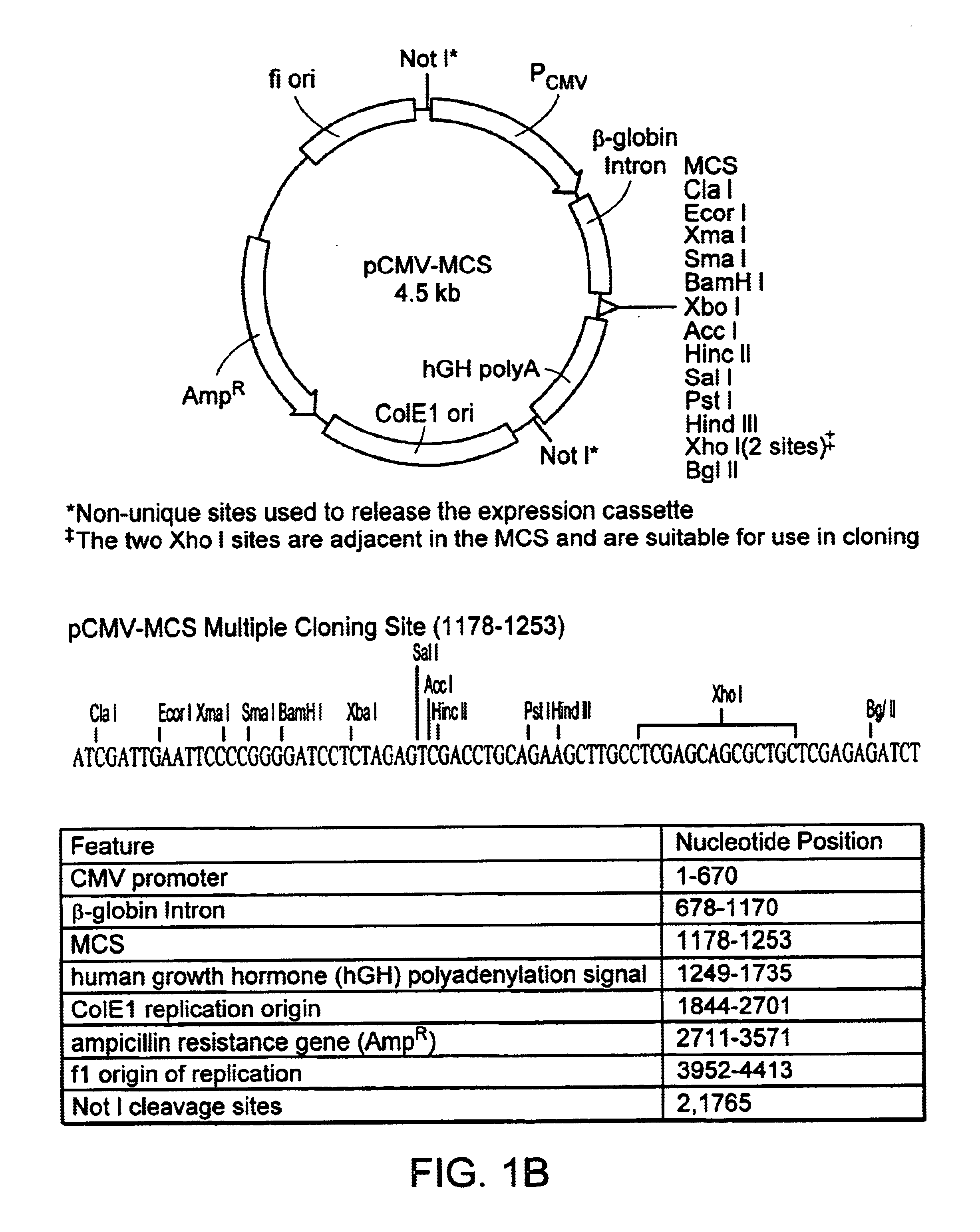Method and kits for titering adeno-associated virus vectors
a technology of adenovirus and kit, which is applied in the field of viral vectors, can solve the problems of inability to produce infectious adenovirus by itself, laborious and inefficient original method of preparing aav particles, and difficulty in producing vector particles, so as to reduce the time necessary, avoid the problems inherent in use, and eliminate the variations in target cell susceptibility to adenovirus infection
- Summary
- Abstract
- Description
- Claims
- Application Information
AI Technical Summary
Benefits of technology
Problems solved by technology
Method used
Image
Examples
example 1
Four Plasmid AAV Vector System
The four plasmids were originally from Avigen (Alameda, Calif.). The plasmids were transformed into XL-10 Gold chemical competent cells (Stratagene, Calif.). The transformed cells were plated out on LB / Amp agar plates and incubated overnight at 37° C. A single colony was picked for each plasmid and inoculated in 200 ml of 1×LB / Amp medium. A Maxi-prep was done for each plasmid with Qiagen maxi-filter plasmid purification kit according to manufactorer's protocol. The plasmid DNA pellets were resuspended in T10E1, pH7.5 solution. The authenticity of the purified plasmids was verified by the following methods:a. Restriction enzyme digestion. One half microgram (0.5 μg) of plasmid DNA was digested with one or two restriction enzyme(s) in a final volume of 10 μl at 37° C. for 2 hours. The digested plasmid samples then were loaded onto 1% TAE agarose gel and the sizes of DNA were visualized under UV light.b. Sequencing. The plasmid DNAs of p4.1c and pVmLacZ we...
example 2
AAV Vector Titration
i) Titering With Wild-type Adenovirus:
In a 24-well plate, HeLa cells were evenly seeded at a density of 1×10 5 cells per well in a 0.5 ml volume. A 10-fold series of dilution starting from 5 ul of viral stock per well to 0.00005 ul / well was added to each well of HeLa cells along with wild-type adenovirus-5 (50 virions / cell) and incubated for 20 hours. When the lacZ gene was used a reporter, an in situ beta-galactosidase staining assay was performed using a Stratagene kit (cat#2000384). Briefly, the cells were fixed with 2% formaldehyde and 0.2% glutaraldehyde in PBS for 10 min. at room temperature, washed once with PBS and stained with solution containing 5 mM K3Fe(CN)6, 5 mM K4Fe(CN)6, 2 mM MgCl2, and 1 mg / ml x-gal in PBS overnight at 37° C. The blue cells were counted at appropriate dilution.
ii) Titering Without Adenovirus:
HT1080 cells were evenly seeded in a 12-well plate at a density of 1.5×105 cells / well in 1 ml of C-DMEM 1 day prior to assay (care was taken...
example 3
AAV Titering in the Cells Treated with Topoisomerase Inhibitor And CMV Promoter Inducing Agent
DNA synthesis inhibitors are not the only agents capable of increasing the transduction efficiency or the titering efficiency of AAV particles. Topoisomerase inhibitors, such as etoposide and camptothecin can be used in conjunction with an agent that induces the CMV promoter to provide an improved AAV titer method.
To titer AAV in cells treated with a topoisomerase inhibitor and an agent that induces the CW immediate early promoter, HT1080 cells (or other target cells) are evenly seeded in a 12-well plate at 1.5×105 cells / well in 1 ml of C-DMEM. The next day, the cells are treated with the topoisomerase inhibitor and an agent that increases the activity of the CMV promoter. For example, 0.2 ml of C-DMEM with 18 μM etoposide and 6 mM of sodium butyrate (NaB) is added to each well without changing the medium, for a final concentration of 3 μM etoposide and 1 mM sodium butyrate. The medium is m...
PUM
| Property | Measurement | Unit |
|---|---|---|
| time | aaaaa | aaaaa |
| time | aaaaa | aaaaa |
| volume | aaaaa | aaaaa |
Abstract
Description
Claims
Application Information
 Login to View More
Login to View More - R&D
- Intellectual Property
- Life Sciences
- Materials
- Tech Scout
- Unparalleled Data Quality
- Higher Quality Content
- 60% Fewer Hallucinations
Browse by: Latest US Patents, China's latest patents, Technical Efficacy Thesaurus, Application Domain, Technology Topic, Popular Technical Reports.
© 2025 PatSnap. All rights reserved.Legal|Privacy policy|Modern Slavery Act Transparency Statement|Sitemap|About US| Contact US: help@patsnap.com



